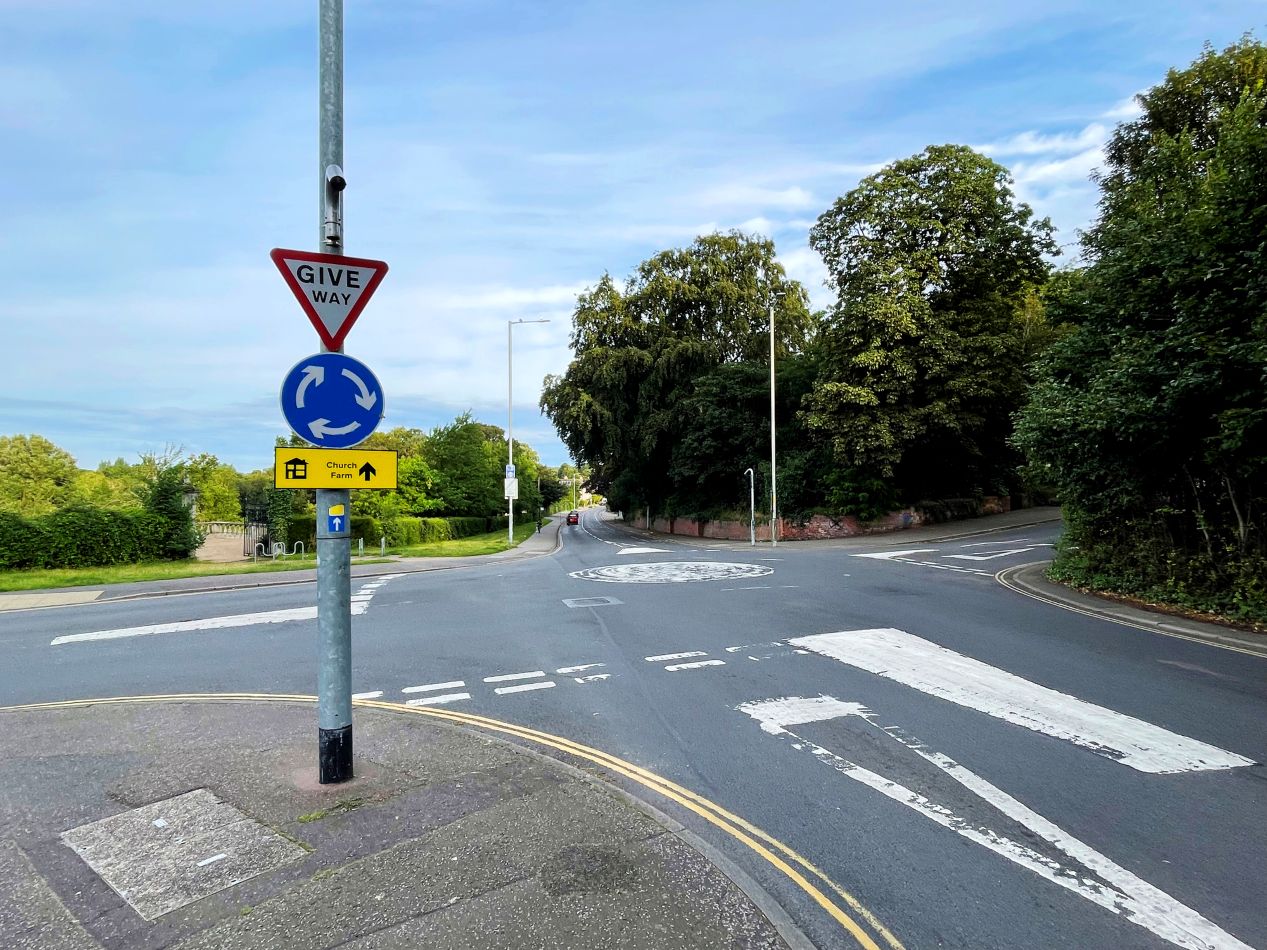In many situations, such as complex intersections and exits from private properties, direct visibility can be limited, increasing the risk of accidents. Parabolic mirrors offer a simple yet effective solution to improve visibility and safety in these critical contexts.

What are parabolic mirrors?
Parabolic mirrors are road safety devices characterized by a curved reflective surface in the shape of a parabola. This design sets them apart from flat or convex mirrors, providing a wider field of view and reduced image distortion.
Thanks to their unique shape and ease of installation, they are a practical and widely used solution for improving safety at critical points of the road network, both in public and private settings. Their effectiveness in providing an extended view makes them useful where direct visibility is compromised, helping to prevent potential accidents and facilitate safe maneuvers in narrow or complex spaces.
How they work
The physical principle behind parabolic mirrors, as previously mentioned, takes advantage of the particular shape of the reflective surface: the parabolic curvature allows a wide area to be captured and reflected in a compact yet readable image.
The main advantages of this design are:
- extended field of view: ideal for covering large areas such as intersections or blind curves;
- reduction of blind spots: allows you to see obstacles that would otherwise be hidden;
- less image distortion compared to convex mirrors: makes it easier to judge distances.
However, it is also important to consider some limitations:
- possible glare in strong lighting conditions;
- risk of fogging in case of humidity or sudden temperature changes;
- need for regular maintenance to maintain effectiveness.
When are parabolic mirrors used and what does the Highway Code say
The use of parabolic mirrors is regulated by the Highway Code, which defines how and where they can be installed.
Reference regulations
According to Article 38 of the Highway Code (Legislative Decree no. 285/1992), it is possible to install devices not expressly provided for by law, such as parabolic mirrors, if authorized by the road owner (Municipality, Province, or ANAS) and deemed necessary for road safety.
For installation on public roads, or on private properties bordering them, it is therefore mandatory to request formal authorization from your municipality, specifying the exact location of the mirror and the reasons for the intervention. The authority will then assess whether the mirror is useful and safe based on local conditions.
Installation contexts
Parabolic mirrors are mainly used in the following situations:
- urban intersections with limited visibility;
- exits from private roads onto public thoroughfares;
- company car parks and maneuvering areas;
- apartment buildings with access to busy roads;
- industrial zones and logistics areas with heavy vehicle traffic.
Height of a parabolic mirror: where and how should it be installed?
The installation method of parabolic mirrors varies depending on the specific context and different visibility needs, so there is no universal standard height.
However, some general guidelines suggest:
- a height between 1.5 and 2.5 meters above the ground;
- positioning that ensures visibility for both vehicles and pedestrians;
- avoiding visual obstacles such as road signs, hedges, or lampposts.
It is essential to carry out an accurate site inspection to determine the ideal position, considering:
- traffic flow;
- geometry of the intersection or access point;
- presence of any obstacles;
- lighting conditions.
How to overcome the limitations of parabolic mirrors?
Despite their usefulness, traditional parabolic mirrors have some limitations, especially in adverse weather conditions:
- risk of fogging in high humidity;
- ice formation in cold temperatures;
- need for cleaning and regular maintenance.
To address these issues, more advanced technological solutions have been developed. Among these, Safe Join stands out as a real innovation in road safety.
This is a next-generation road mirror, designed to ensure maximum effectiveness even in challenging environmental situations. Safe Join integrates advanced features, including:
- integrated anti-fog and anti-ice system for consistently optimal visibility;
- solar power supply, enabling fully autonomous operation;
- minimal maintenance, thanks to durable materials and smart design.
Thanks to these innovative features, Safe Join guarantees optimal performance even in the most critical conditions, from blind curves to dangerous intersections, and in areas subject to harsh climates where traditional maintenance would be complex and costly.
Find out how Safe Join can improve road safety in your area 👉 https://www.safejoin.net/en/what-is-safe-join/